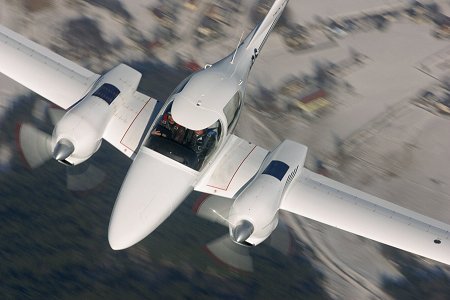Diamond approves DA42’s installation and targets more sales to broadcasters
Austria’s Diamond Aircraft has cleared the way for a radio transmitter to be fitted into a UK-registered DA42 Twin Star in a move that could see several of the piston twins used by broadcasters for traffic surveillance slots.

Diamond delivered two DA42s to Select Air at Stapleford airport, outside London, last month to be used as the aerial traffic report service for the city’s Capital FM radio station.
However, the UHF and FM antennas required for the broadcaster’s portable equipment had not been fitted because of production delays caused by the certification of the aircraft’s Garmin glass cockpit.
The aerials were due to be installed last month by Tenencia Aerospace Design in Coventry, UK, but required a letter of no technical objection from Diamond.
Initially, Diamond was concerned that the positioning of the antenna on the nose cone – required because of the composite airframe – would increase the likelihood of a failure of the full authority digital engine control (FADEC) system in the event of a lightning strike.
However, the UK Civil Aviation Authority has cleared the way for the aerial to be fitted, stating the chance of being struck by lightning is slim and Paul Johnson, Tenencia’s modification director, says he expects Diamond to release its letter of no technical objection this week.
Select Air chief pilot Colin Dobney says he expects the first aircraft to be flying this month and used by Capital’s Flying Eye as soon as possible. “We are trying to arrive at a solution that doesn’t affect the airworthiness,” says Dobney.
The company estimates that using the Thielert Aero Engines Centurion 1.7 diesel-powered aircraft for the 100h annual contract could reduce fuel costs by about “one-seventh”, but the planned replacement of its Piper Seneca V has been delayed, says Dobney. The DA42’s laminar-coated wooden MT three-blade propeller has yet to be certificated for de-icing, he adds.
Diamond says it hopes the approval may lead to further sales of the twin to radio stations around Europe. Broadcasters on the continent use fixed-wing aircraft for aerial traffic reporting rather than helicopters, which are common in North America, because of restrictions on flying single-engined aircraft over urban areas.
JUSTIN WASTNAGE/STAPLEFORD
Source: Flight International























